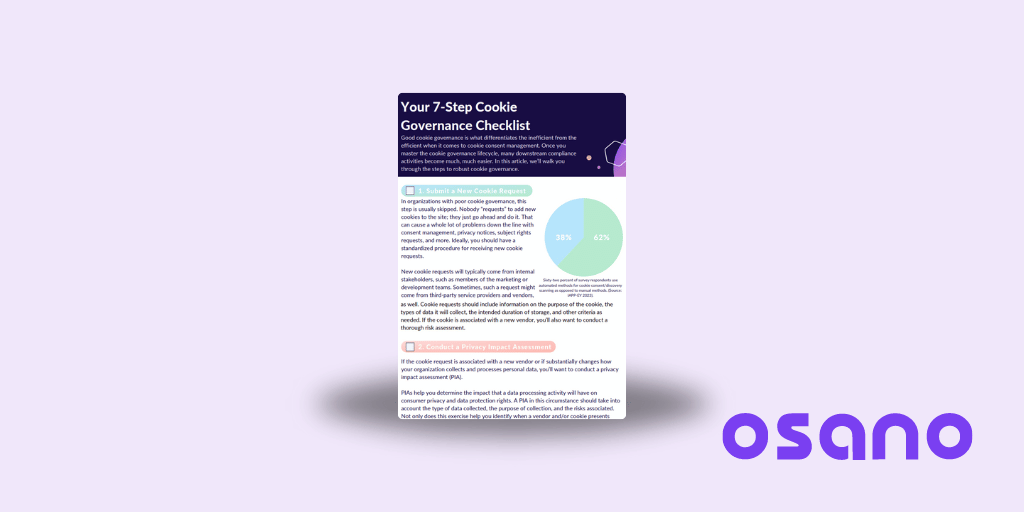Marketers love data.
After all, without data, marketers can’t answer questions like:
- Is the right audience seeing my ad?
- Did our campaign deliver a return?
- Does this or that audience segment respond better to this or that message?
Historically plagued by questions surrounding their efficacy, marketers have embraced data collection and processing with full-throated enthusiasm. For a long time, the key method of securing the data they needed to demonstrate their effectiveness was through cookies.
But with more and more data privacy regulations being passed, rumors are being spread about the “cookieless future.” Is it true that cookies are disappearing? How should marketers adapt to the cookieless future? How can marketers respect consumers’ data privacy and secure the data they need to do their jobs?
We’ll answer all these questions and more below.
What Is the Cookieless Future?
First and foremost, the “cookieless future” is a misnomer. Cookies as a whole aren’t going anywhere soon. When people use the term “cookieless future” or refer to “Google’s cookieless future,” they’re really referring to the phaseout of third-party cookies.
We’ve covered what third-party cookies are in a previous blog as well as how first-party cookies and zero-party data might replace them. But we’ll provide a quick recap here and dive deeper into how your organization can prepare for the phaseout.
In essence, third-party cookies are small text files dropped on your users’ browsers by a third party. For example, if you participate in an advertising network, you might have a script running on your website that belongs to the advertising network (i.e., the third party). That script drops a cookie on your users’ browser, which can then be read by other websites participating in the same advertising network.
This can enable targeted advertising—if an internet user visits a shoe brand, for example, a third-party cookie could ensure they continue to see ads for that shoe brand on different websites.
It’s pretty innocuous on its face, but internet users don’t just search for shoes; they search for medical information, lifestyle advice, and other sensitive subjects. And even when a user’s browsing behavior is innocuous, it’s still ethical to keep them informed about and give them a choice over whether and how you track their behavior. That’s a large part of the reason why third-party cookies are being phased out and why marketers are preparing for a cookieless future.
Why Are Third-Party Cookies Going Away?
They aren't! They are, however, on the decline.
Nearly two-thirds of Internet users say that most companies aren’t transparent about how their data is used. Nearly half have stopped shopping with a company because of privacy concerns, and another 81% of users believe the way a company treats their personal data is indicative of the way it views them as a customer. Clearly, mistrust is the default for consumers.
At the same time, consumers don’t always realize how their data enables marketers to create a positive experience for them. Given a choice, anybody would prefer to see relevant advertisements over irrelevant ones or have a personalized experience over an impersonal one. But the key word is “choice”—under some circumstances, consumers don’t want their data collected to enable those experiences. It could be simple mistrust, the sensitive nature of their browsing behavior, or any reason at all.
Because third-party cookies so often ran afoul of consumer privacy rights, most browsers are dropping support for them. Firefox, Brave, and Safari have blocked third-party cookies for a long time. Chrome, the most popular browser on the market, had stated that it would drop support for third-party cookies. But after missing several deadlines, Google has since reversed its position. You can learn all about how data collection in Chrome works for businesses here.
How to Prepare for a Cookieless World
While third-party cookies are still around, there are plenty of issues with them that might make a business wary of over-relying on them. Plus, it certainly seems like third-party cookies will be a less popular choice in the future.
So, can the third-party phaseout be a win-win for consumers and companies? Absolutely! There are several ways to promote consumers’ peace of mind and build trust while collecting data ethically and transparently.
Implement a First-Party Cookie Strategy
The purpose of third-party cookies is to provide a more personal user experience. A properly-implemented first-party cookie strategy can yield similar results while increasing trust.
First-party cookies are text files generated and stored on a website visitor’s computer to enhance user experience. This data includes remembering items in a shopping cart, passwords, language and location settings, how often they visit, and other basic analytics.
A study by McKinsey & Company showed that 66% of customers are willing to share personal data in exchange for additional value. Observing consumer behavior and using it to improve their experience is a win-win for shoppers who desire a personalized experience and marketers who need user data to create targeted advertising campaigns.
Go Directly to Your Consumers for Zero-Party Data
Observed behavior discovered through first-party cookies is excellent—but why settle for observations when you can get data straight from the source? Zero-party data asks customers to share communication preferences, purchase intentions, and other information to give users a better shopping experience.
Remember, most customers want to give data if they’re getting something out of it. Here are a few ways to ask for zero-party data:
- Ask users about their communication preferences.
- Design a quiz to gain data and provide a product recommendation.
- Give visitors a special offer or discount in exchange for providing personal data.
- Request an email address to let customers know when an out-of-stock item is restocked.
- Gift a relevant ebook in exchange for personal data.
Make data discovery fun and rewarding for the visitor, and you’ll gain data that reveals their true intent. With third-party cookies going away, it's important to talk to your website visitors instead of relying on outside sources or online behavior. Direct communication builds trust and a relationship between a brand and a customer.
Be Transparent About How You Use Collected Data
As we described earlier, consumers mistrust brands with their data by default. Is it possible to gain their trust back? Of course, it is—but trust must be earned.
Earn customer trust by practicing full transparency. Let them know:
- What data you are collecting.
- Why you are collecting the information.
- Why sharing their data is beneficial to them.
- How their data will be protected.
- How they can add, remove, or modify their data.
Create a user experience designed with your customers’ comfort in mind. Be transparent, build trust, and increase the likelihood of receiving the data you need.
Think Outside the Cookie Box
Cookies and zero-party data aren’t the only ways to gather consumer information. Consider alternate engagement strategies, such as newsletters, online chats, and social media interaction when preparing for a cookieless future.
Every interaction with a customer is a chance for relationship building. Train your customer-facing team to collect information and work with the IT department to find ways to build your database without cookies.
In a case study of the Walmart+ membership, Google found that Walmart increased its online sales by 37% in 1 quarter. How did they do it? Providing loyal member benefits, a more effortless checkout experience, and free shipping contributed to the major chain’s success. The new program can’t take all the credit, though. The brand also began hosting in-person events, like drive-in movies, to build relationships.
Consider how your brand can implement gestures like these to build trust and encourage sales without relying on cookies.
Just remember that data privacy regulations still require you to provide notice and secure consent if you intend to collect and process consumer personal data, whether you use cookies or not. For non-cookie-based methods of personal information, you’ll want to explore universal consent solutions.
Set up a Cookie Consent Management Program to Block Third-Party Cookies
Gaining consent is an integral part of building relationships and trust. When you set up a cookie consent management program, you can ensure compliance with worldwide privacy laws and build trust with one line of code. In a cookieless future, it's important to shield your customers from data collection without their consent.
Use Osano to Gain Consent While You Phase Out Third-Party Cookies
Third-party cookies going away doesn’t have to tank your advertising strategy. Replace third-party cookies with first-party cookies, zero-party data, alternate engagement strategies, and an easy-to-implement consent management platform. These strategies guarantee increased user trust and success in the cookieless future.
Osano Cookie Consent automatically blocks and unblocks third-party scripts to ensure unsanctioned third parties don’t get you in trouble. It also secures consent for cookies that collect first-party data as well. And, if you collect first- or zero-party data through other channels that don’t rely on cookies, you can use Osano’s Universal Consent & Preference Hub to make sure your data collection is compliant.
Schedule a demo with an Osano expert to see how one line of code can immediately secure your compliance with privacy laws across the globe.
Cookie Governance Checklist
Uncertain as to whether you're managing your organization's cookies appropriately? This checklist guides you through all the necessary steps to ensure you stay compliant efficiently.
Download Your Copy
Osano Staff
Osano Staff
Osano Staff is pseudonym used by team members when authorship may not be relevant. Osanians are a diverse team of free thinkers who enjoy working as part of a distributed team with the common goal of working to make a more transparent internet.
.webp?width=1220&height=1090&name=Osano-guarantee-seal%20(1).webp)



